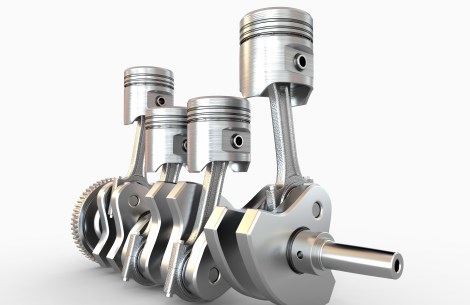Uyemura Launches New Electrolytic Nickel Technology
Two new high-speed electrolytes for the electrodeposition of nickel phosphorus are Umicore Niphos 967 and 968.

Uyemura has introduced two new high-speed electrolytes for the electrodeposition of nickel phosphorus.
Umicore Niphos 967 and 968 represent significant technology advancements - and important new options - for companies who currently plate electroless nickel, as well as companies seeking a bright, RoHS compliant finish with corrosion properties equal to electroless nickel, at a very competitive cost.
Niphos 967/968 electrolytic nickel (also referred to as “metallic glass” due to an amorphous structure) accommodates up to 13 percent phosphorus, a distinctive trait which translates to very high hardenability. Specifically, when parts are heat treated at 400oC for 30 minutes, Vickers hardness rises from 600 to over 1200. Niphos also contributes lubricity, substantially enhances corrosion and abrasion resistance, and is diagmagnetic.
Like other electrolytic baths, Niphos 967 and 968 are virtually unlimited in terms of metal turnover. Baths have no fixed life, and can last for years, because electrolytic plating does not spawn contaminant by-products. As a result, waste treatment burdens for Niphos electrolytic nickel processing are low - as is the cost of energy, thanks to a relatively low operating temperature.
Operational flexibility also favors these electrolytic nickel options: phosphorus concentration can be simply dialed-in – with no permanent effect . As the current is modified, the phosphorus moves along with it – without changing the chemistry. Niphos 967/968 will also plate a gradient phosphorus content if two separate phos layers are needed on the same component.
One additional factor of interest to plating shops is the ability to run Niphos electrolytic nickel in sequence with standard electrolytic nickel. By adding nickel phosphorus to an existing electrolytic nickel-gold line, the former becomes an easy, drop-in process. Having one line process both chemistries, while eliminating the un-racking and re-racking operation associated with electroless nickel, is a major cost benefit for shops that currently run electrolytic nickel gold processes.
Niphos 967, which is specified for rack and barrel processing, is ideally suited for the plating of connectors and other high frequency electronic parts. Niphos 968, which is used for barrel plating, is well suited for use on piston rods, shock absorbers, and other products with a relatively simple shape.
For more details, or to arrange test processing, contact Uyemura International Corporation at 860-793-4011, or visit www.uyemura.com
Related Content
-
Anodizing for Bonding Applications in Aerospace
Anodizing for pre-prep bonding bridges the gap between metallic and composite worlds, as it provides a superior surface in many applications on aluminum components for bonding to these composites.
-
Chicago-Based Anodizer Doubles Capacity, Enhancing Technology
Chicago Anodizing Company recently completed a major renovation, increasing its capacity for hardcoat anodizing and Type II anodizing.
-
Understanding PEO Coatings
Using high-speed cameras and back side illumination (BSI) sensor technology to analyze plasma electrolytic oxidation.













.jpg;maxWidth=300;quality=90)

